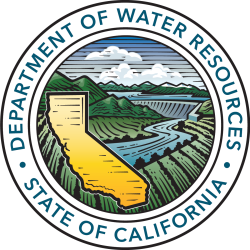WATER BANK PUBLIC ENGAGEMENT
The Regional Water Authority is engaging the public in a discussion about how water banking could expand and operate in the Sacramento region.
The goal of the Water Bank public engagement process is to share information, answer questions and gather input through a series of public meetings, called Stakeholder Forums.
QUICK REFERENCE (Click to access documents/learn more)
Key Document: Water Accounting System
Recording Available from the Water Bank Stakeholder Forum #4 (Feb. 4, 2025) – materials from earlier forums are also available below
Water Bank 2024 Progress Recap and 2025 Outlook
Key Document: Goal, Objectives, Principles, and Constraints
Key Document: Governance: Organizational Framework, Functions, and Associated Roles and Responsibilities
Latest News: Water Bank environmental process

WATER BANK Q&A CONNECT
The Water Bank Program Team is addressing questions provided by stakeholders. Questions may include those from a single stakeholder, or the Program Team may combine similar questions and provide comprehensive answers about the Water Bank. Questions and answers are posted here on this page. Additional questions may be submitted to the Water Bank program.
Email questions to waterbankinfo@rwah2o.org.
You can find questions from previous weeks here.
Theme: Understanding the Water Accounting System for the Sacramento Regional Water Bank
Question: What is the Water Accounting System?
The WAS provides a framework for accurately tracking water stored through the operation of the Water Bank. This framework includes a detailed description of how Water Bank Participating Agencies will transparently manage and account for recharge (deposits), recovery (withdrawals), banking balances, banked water that is not recoverable, and intentionally left in the bank. The WAS aligns with overlying Groundwater Sustainability Plans (GSP) and aids Groundwater Sustainability Agencies (GSA) with managing groundwater sustainably.
Question: What is the importance of the Water Accounting System to the Sacramento Regional Water Bank?
The WAS is an essential component of the Water Bank as it validates the effectiveness of water banking operations, including actions taken to recharge or bank water.
Question: How does the Water Accounting System contribute to groundwater sustainability in accordance with the Sustainable Groundwater Management Act?
The Water Bank is a project identified in both the North and South American GSPs to aid in managing groundwater sustainably and in accordance with the Sustainable Groundwater Management Act. Under the Water Bank, recharge actions taken by Participating Agencies will increase groundwater levels and the amount of groundwater in storage or banked in each subbasin. Banked water will be available for withdrawal for local, regional, and/or potentially statewide uses during periods of drought or other times to aid in water supply reliability and ecosystem health. Specifically, the WAS (1) provides accurate and defensible accounting by tracking Water Bank operations, including recharge, recovery, banking losses, and leave-behind volumes, and (2) aids in sustainable groundwater management as defined in GSPs through the increase in groundwater levels and water stored within the subbasin over time. The Water Accounting System includes adaptive management provisions that will be implemented if any challenges arise related to Water Bank operations.
Question: What geographical area does the Water Accounting System cover?
The Water Accounting System provides standardization and comprehensive coverage of all water banking actions or programs within the North and South American subbasins as defined by the California Department of Water Resources. It enables accurate and transparent tracking of (1) various recharge methods, including spreading basins, injection wells, and in-lieu recharge, and (2) recharge using multiple water sources, such as surface water, recycled water, and stormwater.
Question: How was the WAS developed?
RWA developed the WAS based on direction from Water Bank Participating Agencies, with input from GSAs in both the North and South American subbasins, non-governmental organizations, technical experts, and other stakeholders. Incorporation and consideration of State and Federal documentation and processes were also used in the development of the WAS.
Question: How will the WAS be managed?
RWA will manage the WAS on behalf of Water Bank Participating Agencies. It is anticipated that the Water Bank will be operational as early as 2027. The WAS will be implemented consistent with adaptive management principles as defined in the WAS document and will be evaluated periodically by the Water Bank Participating Agencies for the purposes of determining changes and updates.
Question: What is the role of Groundwater Sustainability Agencies relative to the Water Accounting System?
GSAs are local public agencies formed to manage groundwater basins in a sustainable way, as required by the California Sustainable Groundwater Management Act (SGMA). GSAs develop and implement GSPs that outline how groundwater will be used and managed to avoid undesirable results and prevent overdraft. GSA input and active coordination with Water Bank Participating Agencies and the RWA are key to ensuring the benefits of the Water Bank project to groundwater sustainability are realized and any challenges associated with Water Bank operations are addressed to avoid any unreasonable negative effects in each subbasin. The WAS or future Water Bank operations do not and will not alter the authority of overlying GSAs under SGMA.
Foundational Document on Governance Structure for the Sacramento Regional Water Bank
The Regional Water Authority (RWA) has released a second foundational document for the Sacramento Regional Water Bank, marking another significant step forward in defining the organization, management, and operation of the Water Bank to enhance climate resiliency and environmental stewardship in the Sacramento region.
Titled “Governance: Organizational Framework, Functions, and Associated Roles and Responsibilities,” this document delineates the essential functions and activities vital for the successful implementation of the Water Bank. It introduces an organizational framework and outlines associated roles and responsibilities embedded within the Water Bank’s structure.
You can read the full document here.
Highlights include:
second foundational document for the Sacramento Regional Water Bank, marking another significant step forward in defining the organization, management, and operation of the Water Bank to enhance climate resiliency and environmental stewardship in the Sacramento region.
Titled “Governance: Organizational Framework, Functions, and Associated Roles and Responsibilities,” this document delineates the essential functions and activities vital for the successful implementation of the Water Bank. It introduces an organizational framework and outlines associated roles and responsibilities embedded within the Water Bank’s structure.
You can read the full document here.
Highlights include:
- Functional Areas: The document categorizes necessary activities into four functional areas—Policy and Legal, Operations, Administrative, and Outreach activities. These are informed by established guidelines and regional experiences, particularly from recent groundwater substitution transfers.
- Organizational Framework: The Water Bank’s implementation activities are envisioned to be carried out by three primary parties: Participating Agencies, Coordinating Body, and Planning/Technical Support. Importantly, the framework is designed to facilitate effective collaboration without overshadowing or restricting the autonomy of existing agencies.
- Roles and Responsibilities: Detailed tables in the document outline the roles and responsibilities of each party across various implementation activity groupings. This transparency aims to foster clear accountability and efficient collaboration.
- Key External Entities: The Water Bank will engage with external entities such as banking partners, regulatory authorities, and stakeholders, with the document defining the roles of these entities.
- Vision and Strategy: Released in June 2023, outlining goals, objectives, principles, and constraints. You can find the GOPC document here.
- Structure: The current document, focusing on the organizational framework, functions, and associated roles and responsibilities.
- Operations Support Tools: Will cover water accounting, monitoring, and reporting.
- Agreements and Finance: Will describe the framework to encourage water banking and establish roles and responsibilities in the financial aspects.
WATER BANK STAKEHOLDER FORUMS
Materials from the 1st Stakeholder Forum Held October 26, 2022
The first Stakeholder Forum explored key topic areas such as water sources and management in the Sacramento region; projected impacts of climate change on the region’s water resources; how water banking works; how a Water Bank could help the region adapt to climate change; and other topics.
Materials from the 2nd Stakeholder Forum Held February 13, 2023
The second Stakeholder Forum explored the proposed goal, objectives, principles and constraints for the Sacramento Regional Water Bank, a groundwater storage program utilizing the expansive reservoir under the urban core for storing water during wet times for use during dry times.
- Recording of Stakeholder Forum #2
- PowerPoint presentation slides
- Questions submitted during Stakeholder Forum #2
- Proposed Goal, Objectives, Principles, and Constraints
Materials from the 3rd Stakeholder Forum Held December 12, 2023
The third Stakeholder Forum provided an update about progress on the Water Bank and plans for 2024 and beyond.
Materials from the 4th Stakeholder Forum Held February 4, 2025
The fourth Stakeholder Forum provided updates on planning and coordination efforts, including the nearly complete Water Accounting System.





